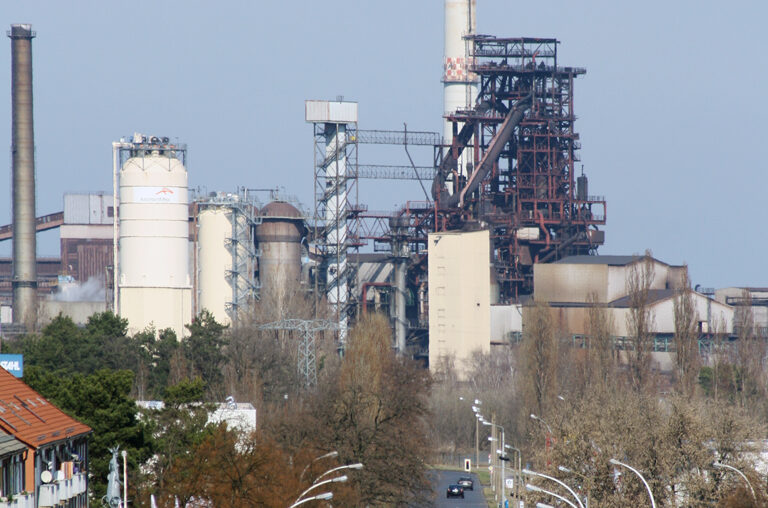What Eisenhüttenstadt, the “steel center” of Germany, is like today

One city was missing from the revolutions in the German autumn of 1989: its name is Eisenhüttenstadt. Pierluigi Mennitti's article
One city was missing from the revolutions in the German autumn of 1989. Its name is Eisenhüttenstadt, even if in its short life it was not always called that. When it was founded in 1953 it was given the name Stalinstadt, like that of the steel plant next to which it stood. Both the industry and the city born in the sandy plain of Brandenburg close to the Oder, on the new post-war border with Poland, represented Eastern Germany's most daring bet for almost 40 years.
It was a decree passed in the third congress of the SED, the single party of the GDR, that sanctioned the birth of the factory: a steel Kombinat that was supposed to flood with iron, cast iron and steel the nascent communist economies of Eastern Europe, and of the complementary city that it would have hosted managers, workers and their families. It was July 24, 1950 and the sun of the future shone brightly on the hopes of Prussian communism. Stalinstadt would have been the Sabaudia of the North: a new city, built according to the urban plans of real socialism.
And so it was: in 10 years the first four housing complexes arose, retracing the architectural coordinates of classicism imported from Moscow, long and compact four-storey buildings, stretched along wide and airy arteries, enriched by arches and passages in collective internal courtyards, full of greenery and recreational spaces. And then buildings for cultural events, a theater named after Friedrich Wolf, doctor-writer and communist politician, schools and kindergartens of all levels, the imposing and square Rathaus, a kneipe for the proletarians' after-work club called Aktivist, the inevitable square with an obelisk and a red star at the tip to remember the sacrifice of the Soviet soldiers, even a real shopping center where you can experience the thrill of red consumerism.
In the Kombinat the blast furnaces were melting cast iron at full capacity and the city was expanding, always incorporating new workers and obediently following the history that was changing outside of its real-socialist setting: Stalin had in the meantime fallen into disgrace and for a moment it was thought of re-proposing that which must have been the original name, Karl Marx Stadt. But in the meantime, the name of the never-out-of-fashion German philosopher was taken by Chemnitz, in Saxony, and to avoid toponymic chaos it was decided not to cheat anymore and to call the city for what it was: the city of the steel centre, Eisenhüttenstadt .
From its beginnings to the fall of the Berlin Wall , the demographic curve of communist Sabaudia was a continuous crescendo: 2,500 thousand inhabitants at the end of 1953, 24 thousand in 1960, 45 thousand in 1970, 48 thousand in 1980. The maximum peak eight years later , 53 thousand. Then just an unstoppable descent.
That factory had become too large, unproductive and expensive to survive the end of the closed universe of the Comecon. This is why, as the end of the GDR approached, anguish and fear of the future grew in Eisenhüttenstadt. Here the peaceful revolution of '89 did not bring freedom and emancipation but poverty and unemployment. The factory and the model city have become budget problems, its production and its inhabitants numbers to be cut.
In the meantime, renovations (industrial and urban) have made it possible to limit the damage, despite the fact that today's Eisenhüttenstadt is far from the splendor of times gone by. In the factory, not all the blast furnaces have gone out, a multinational, ArcelorMittal, has taken over state ownership and steel remains the main employer. Unemployment is at 8.6%, two points higher than the national average, but over 3 points lower than the vaunted Berlin. On the other hand, the officially resident inhabitants have dropped to 30 thousand, young people stay here until the end of school, then emigrate for university and never return: in 1989 the average age was 28, today it is 45. And in the buildings renovated with EU contributions, the most appreciated work is that of adapting to housing standards for the elderly.
This is a machine translation from Italian language of a post published on Start Magazine at the URL https://www.startmag.it/mondo/eisenhuttenstadt-germania/ on Wed, 08 Nov 2023 05:52:11 +0000.
